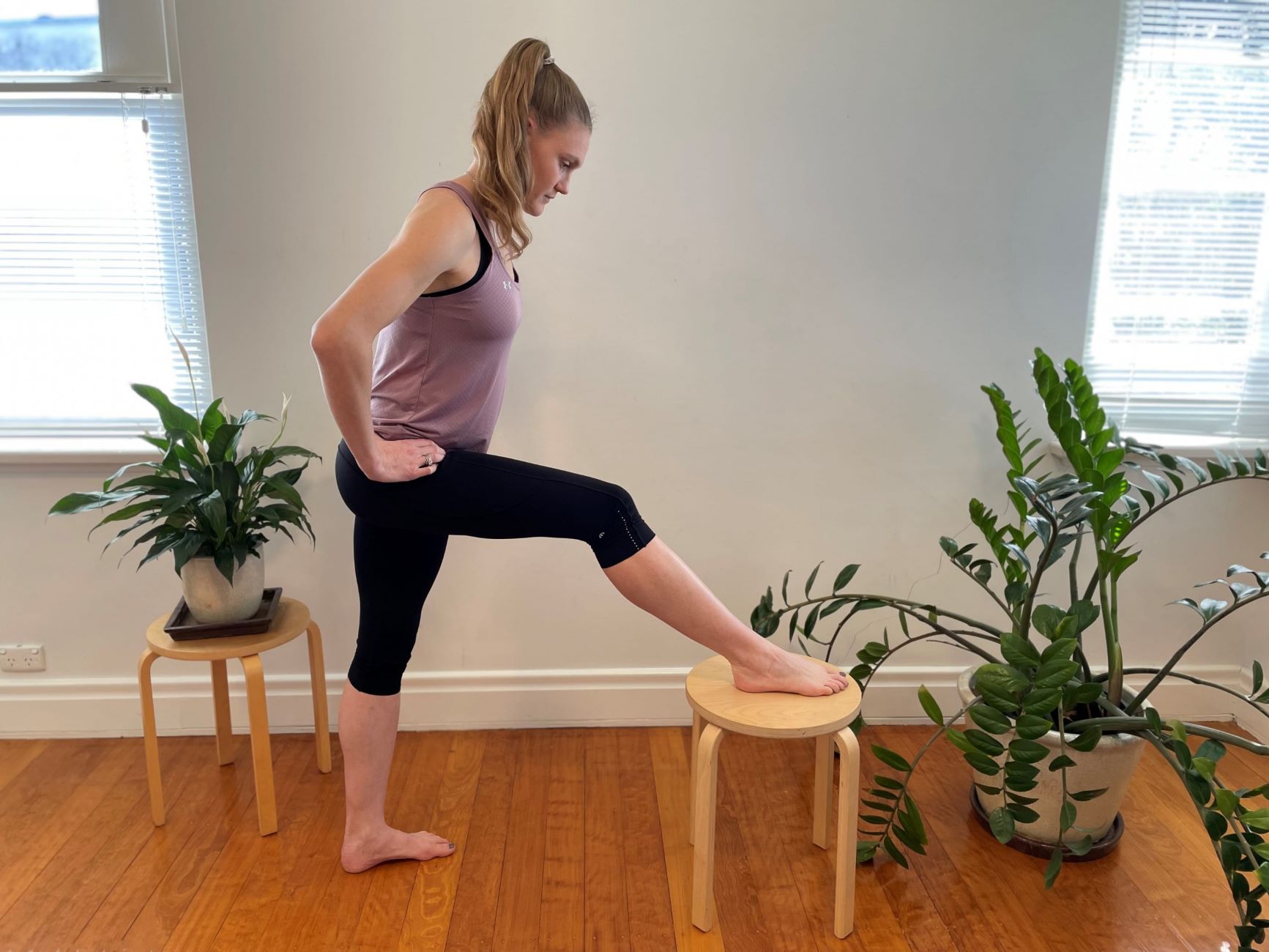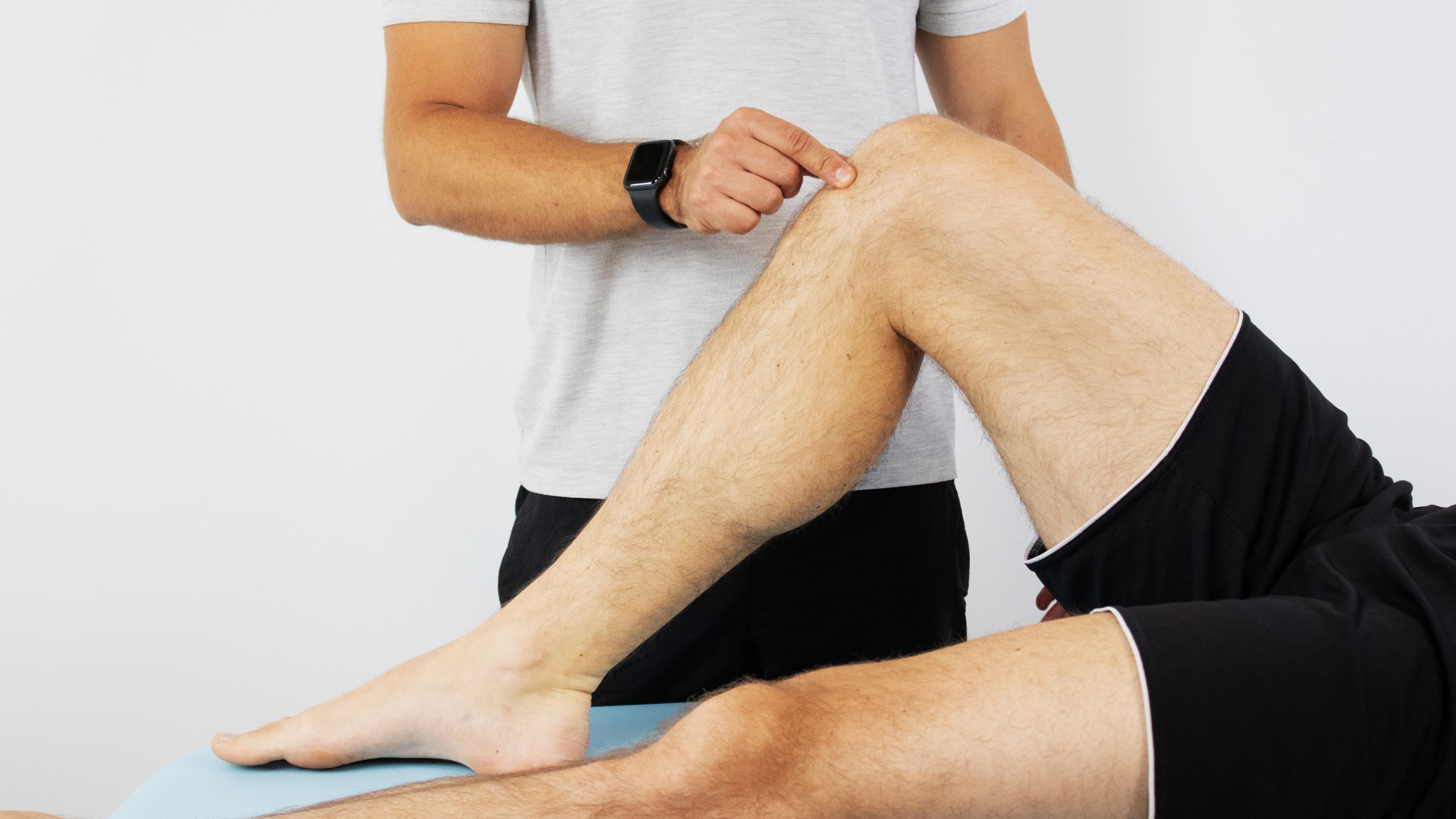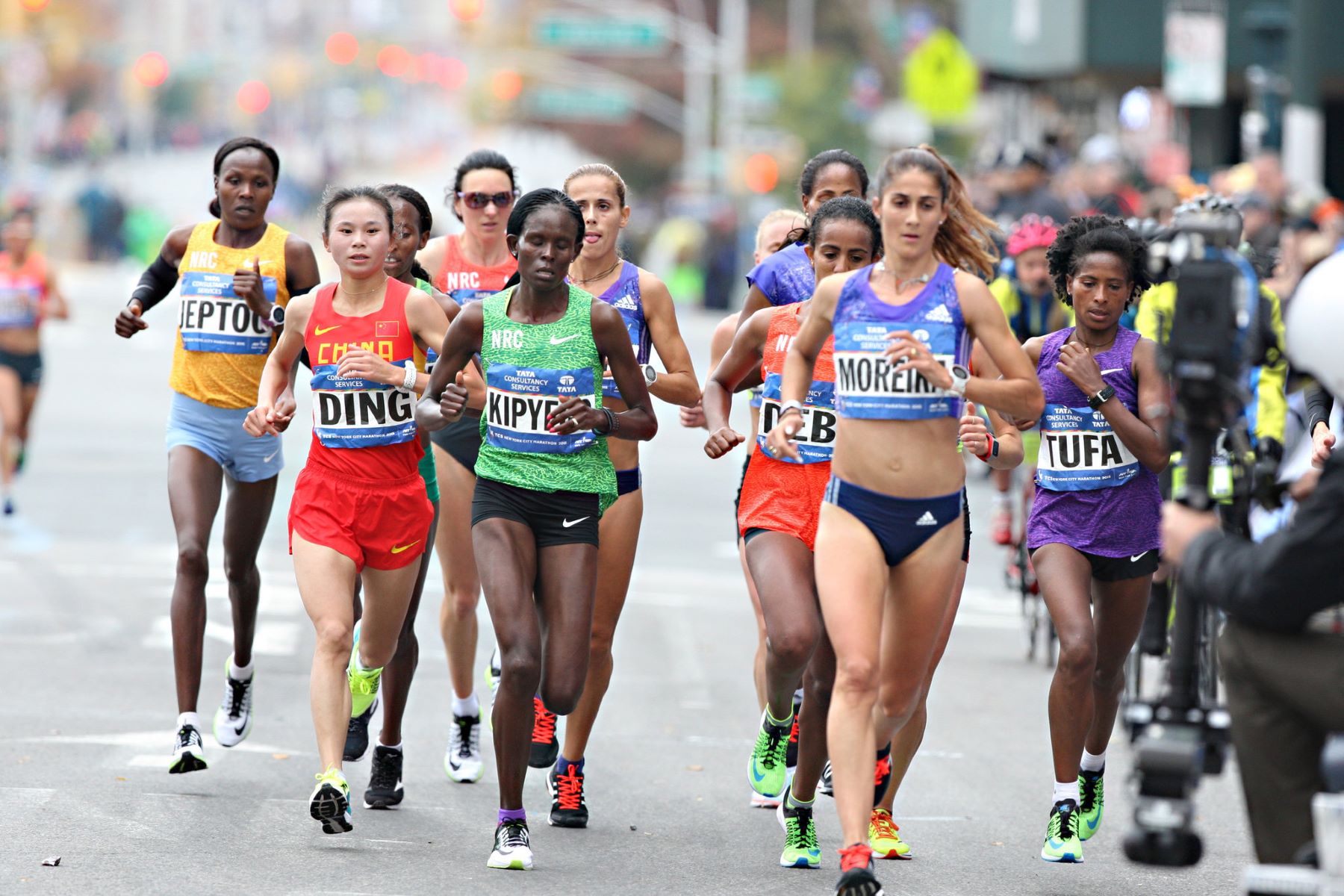Home>Health & Nutrition>Injury Prevention>The Complete Guide To Hamstring Tendinopathy


Injury Prevention
The Complete Guide To Hamstring Tendinopathy
Published: February 26, 2024
Learn effective strategies for injury prevention and management of hamstring tendinopathy with our comprehensive guide. Discover expert tips and exercises to keep your hamstrings healthy.
(Many of the links in this article redirect to a specific reviewed product. Your purchase of these products through affiliate links helps to generate commission for Therunningadvisor.com, at no extra cost. Learn more)
Table of Contents
Understanding Hamstring Tendinopathy
Hamstring tendinopathy, a common condition among athletes and physically active individuals, refers to the degeneration, inflammation, or irritation of the hamstring tendons. The hamstring tendons are thick, fibrous tissues that connect the hamstring muscles to the ischial tuberosity, a bony prominence at the base of the pelvis. This condition can cause discomfort, pain, and reduced function in the affected area, impacting an individual's mobility and performance.
The hamstring tendons play a crucial role in the movement of the hip and knee joints, particularly during activities such as running, jumping, and kicking. When these tendons undergo repetitive stress or overuse, they can become strained and damaged, leading to the development of tendinopathy.
Understanding the underlying mechanisms of hamstring tendinopathy involves recognizing the impact of mechanical stress, inadequate recovery, and biomechanical imbalances on the tendons. Factors such as sudden increases in training intensity, poor flexibility, and muscle weakness can contribute to the development of this condition. Additionally, age-related changes in tendon structure and blood supply can also predispose individuals to hamstring tendinopathy.
It's important to note that hamstring tendinopathy is not solely attributed to overuse or mechanical factors. Other potential contributors include genetic predisposition, hormonal imbalances, and systemic diseases. These factors can influence the tendon's ability to repair and adapt to stress, ultimately increasing the risk of developing tendinopathy.
By comprehending the intricate nature of hamstring tendinopathy, individuals can gain insight into the importance of proactive injury prevention strategies, early intervention, and targeted rehabilitation. This understanding empowers both athletes and healthcare professionals to address the condition effectively, promoting optimal recovery and long-term musculoskeletal health.
Causes and Risk Factors
Hamstring tendinopathy can arise from a myriad of causes and risk factors, encompassing both intrinsic and extrinsic elements that contribute to the development and progression of this condition. Understanding these underlying factors is crucial in formulating effective prevention and treatment strategies.
Overuse and Repetitive Stress
One of the primary causes of hamstring tendinopathy is overuse and repetitive stress on the tendons. Athletes and individuals engaged in activities that involve frequent and intense use of the hamstring muscles, such as sprinting, jumping, and kicking, are particularly susceptible to this form of strain. The cumulative effect of repetitive stress can lead to microtrauma within the tendons, triggering a cascade of degenerative changes and inflammatory responses.
Biomechanical Imbalances
Biomechanical imbalances, including muscle weakness, poor flexibility, and altered movement patterns, can significantly contribute to the development of hamstring tendinopathy. When certain muscles are disproportionately weak or tight, the load-bearing capacity of the tendons may be compromised, leading to increased stress and strain on the hamstring tendons during physical activities.
Age-Related Changes
As individuals age, the structural integrity and regenerative capacity of tendons may diminish, rendering them more susceptible to degenerative conditions such as tendinopathy. The natural aging process can lead to alterations in tendon composition, reduced collagen synthesis, and impaired vascularization, all of which contribute to an increased vulnerability to tendon injuries.
Read more: The Complete Guide To Running And Hydration
Inadequate Recovery
Insufficient rest and recovery periods between strenuous activities can impede the tendon's ability to repair and adapt to the demands placed upon it. Without adequate recovery, the cumulative microtrauma experienced by the tendons may outpace the body's reparative processes, leading to the onset of tendinopathy.
Genetic Predisposition
Genetic factors can also play a role in an individual's susceptibility to tendon injuries. Variations in tendon structure, collagen composition, and overall tendon health influenced by genetic predispositions can contribute to an increased risk of developing hamstring tendinopathy.
Systemic Diseases and Hormonal Imbalances
Certain systemic diseases, such as diabetes and metabolic disorders, can compromise the overall health and resilience of tendons, predisposing individuals to tendon injuries. Additionally, hormonal imbalances, particularly in estrogen and testosterone levels, can impact tendon health and function, potentially increasing the risk of developing tendinopathy.
By recognizing these multifaceted causes and risk factors associated with hamstring tendinopathy, individuals and healthcare professionals can implement targeted interventions to mitigate these risks and promote optimal musculoskeletal health.
Signs and Symptoms
The manifestation of hamstring tendinopathy is often characterized by a spectrum of signs and symptoms that can significantly impact an individual's physical performance and overall quality of life. Recognizing these indicators is crucial in facilitating early intervention and effective management of the condition.
Pain and Discomfort
One of the hallmark symptoms of hamstring tendinopathy is localized pain and discomfort in the region of the hamstring tendons. This pain is often experienced during activities that engage the hamstring muscles, such as running, jumping, or bending the knee. The discomfort may range from a dull ache to a sharp, stabbing sensation, and can intensify with increased physical exertion.
Tenderness and Swelling
Individuals with hamstring tendinopathy may also experience tenderness and swelling around the ischial tuberosity, where the hamstring tendons attach to the pelvis. Palpation of this area may elicit tenderness, and visible or palpable swelling may be present, indicating inflammation and tissue irritation.
Stiffness and Reduced Range of Motion
Stiffness in the hamstring muscles and reduced flexibility in the hip and knee joints are common complaints among individuals with hamstring tendinopathy. This limitation in range of motion can impede normal movement patterns and may be particularly noticeable during activities that require full extension of the hip or flexion of the knee.
Impaired Function and Performance
Hamstring tendinopathy can compromise an individual's functional capacity and athletic performance. Activities that heavily involve the hamstring muscles, such as sprinting, kicking, or explosive movements, may become challenging and painful. This impairment in function can significantly impact an individual's ability to participate in sports and physical activities.
Gradual Onset and Persistent Discomfort
The onset of symptoms associated with hamstring tendinopathy is often insidious, with discomfort gradually intensifying over time. Individuals may initially experience mild discomfort that progresses to persistent pain and functional limitations. This gradual escalation of symptoms underscores the importance of early recognition and intervention.
Altered Gait and Movement Patterns
As a result of pain and functional limitations, individuals with hamstring tendinopathy may exhibit altered gait and movement patterns. This can include a reluctance to fully extend the hip or flex the knee, as well as compensatory movements to minimize discomfort during walking, running, or other weight-bearing activities.
Pain with Sitting and Prolonged Inactivity
Individuals with hamstring tendinopathy may experience increased discomfort when sitting for extended periods or after prolonged inactivity. The act of sitting can place pressure on the ischial tuberosity, exacerbating pain and stiffness in the affected area.
Night Pain and Disrupted Sleep
In some cases, individuals with hamstring tendinopathy may experience nocturnal pain and discomfort, which can disrupt sleep patterns and contribute to overall discomfort and fatigue.
By recognizing these signs and symptoms, individuals and healthcare professionals can promptly address hamstring tendinopathy, implement targeted interventions, and facilitate a comprehensive rehabilitation plan to restore optimal musculoskeletal function and alleviate discomfort.
Diagnosis and Assessment
Diagnosing hamstring tendinopathy involves a comprehensive assessment that encompasses a thorough medical history, physical examination, and diagnostic imaging studies. Healthcare professionals employ a multifaceted approach to accurately evaluate the extent of tendon involvement, identify contributing factors, and formulate an effective management plan.
Medical History
The diagnostic process commences with a detailed medical history, during which the healthcare provider gathers information regarding the onset and progression of symptoms, previous injuries, activity levels, and any predisposing factors such as systemic diseases or genetic predispositions. Understanding the individual's activity patterns, training regimens, and specific movements that exacerbate symptoms is crucial in identifying potential causes and tailoring the diagnostic approach.
Physical Examination
A comprehensive physical examination is conducted to assess the affected hamstring tendons, evaluate muscle strength and flexibility, and identify any biomechanical imbalances or gait abnormalities. Palpation of the ischial tuberosity and the course of the hamstring tendons is performed to elicit tenderness, swelling, and localized pain. Additionally, range of motion tests, muscle strength assessments, and functional movement evaluations are employed to gauge the extent of impairment and identify compensatory mechanisms.
Diagnostic Imaging
Diagnostic imaging studies, such as ultrasound and magnetic resonance imaging (MRI), play a pivotal role in confirming the diagnosis of hamstring tendinopathy and assessing the structural integrity of the tendons. Ultrasound imaging provides real-time visualization of the tendons, enabling the identification of tendon thickening, degenerative changes, and areas of inflammation. MRI scans offer detailed anatomical information, allowing for the visualization of tendon pathology, assessment of surrounding soft tissues, and the exclusion of other potential sources of pain.
Read more: 3 Exercises To Improve Hamstring Flexibility
Functional Assessments
Functional assessments, including gait analysis, dynamic movement evaluations, and sport-specific functional testing, are integral components of the diagnostic process. These assessments provide valuable insights into the impact of hamstring tendinopathy on an individual's functional capacity, athletic performance, and daily activities. By observing movement patterns and functional limitations, healthcare professionals can tailor rehabilitation strategies to address specific deficits and optimize functional outcomes.
Collaborative Approach
In complex cases or instances where the diagnosis is ambiguous, a collaborative approach involving sports medicine physicians, orthopedic specialists, physical therapists, and radiologists may be warranted. This multidisciplinary collaboration facilitates a comprehensive evaluation, ensures accurate diagnosis, and enables the development of a tailored treatment plan that addresses the unique needs of the individual.
By integrating these diagnostic modalities and approaches, healthcare professionals can effectively assess and diagnose hamstring tendinopathy, laying the foundation for targeted interventions, personalized rehabilitation, and the restoration of optimal musculoskeletal function.
Treatment Options
The management of hamstring tendinopathy encompasses a multifaceted approach aimed at alleviating symptoms, promoting tendon healing, and restoring optimal musculoskeletal function. Treatment strategies are tailored to address the specific needs of the individual, considering factors such as the severity of symptoms, functional limitations, and underlying biomechanical imbalances.
Conservative Management
Rest and Activity Modification
In the initial stages of treatment, rest and activity modification are essential to alleviate stress on the affected tendons and facilitate the reduction of pain and inflammation. Temporary modification of activities that exacerbate symptoms, such as running, jumping, or high-intensity training, allows the tendons to undergo the initial stages of healing.
Physical Therapy and Rehabilitation
Physical therapy plays a pivotal role in the management of hamstring tendinopathy, focusing on targeted exercises to improve flexibility, strengthen the surrounding musculature, and address biomechanical deficits. Modalities such as ultrasound therapy, eccentric strengthening exercises, and soft tissue mobilization may be incorporated to promote tendon healing and optimize functional outcomes.
Biomechanical Assessment and Correction
Identifying and addressing biomechanical imbalances through gait analysis, movement assessments, and corrective exercises is crucial in mitigating the risk of recurrent tendinopathy. By optimizing movement patterns, muscle balance, and joint mechanics, individuals can reduce the strain on the hamstring tendons and enhance overall musculoskeletal function.
Pharmacological Interventions
Non-Steroidal Anti-Inflammatory Drugs (NSAIDs)
Short-term use of NSAIDs may be prescribed to alleviate pain and reduce inflammation in the early stages of tendinopathy. However, their long-term use is carefully monitored due to potential adverse effects on tendon healing and overall tissue integrity.
Regenerative Medicine
Platelet-Rich Plasma (PRP) Therapy
PRP therapy involves the injection of concentrated platelets from the individual's own blood into the affected tendon, promoting tissue regeneration and accelerating the healing process. This regenerative approach aims to enhance tendon repair and restore optimal tendon function.
Minimally Invasive Interventions
Ultrasound-Guided Percutaneous Tenotomy
In cases where conservative measures have not yielded significant improvement, ultrasound-guided percutaneous tenotomy may be considered. This minimally invasive procedure involves the precise removal of degenerated tendon tissue, promoting tendon healing and reducing pain.
Collaborative Rehabilitation
Integration of Sports-Specific Training
Collaboration with sports medicine professionals and athletic trainers is integral in facilitating a gradual return to sports-specific activities. This collaborative approach ensures that individuals regain functional capacity and athletic performance while minimizing the risk of recurrent tendinopathy.
By integrating these comprehensive treatment options, individuals with hamstring tendinopathy can benefit from a tailored approach that addresses the underlying pathology, promotes tendon healing, and facilitates a safe return to physical activities. The combination of conservative management, regenerative interventions, and collaborative rehabilitation strategies forms the cornerstone of effective tendinopathy management, ultimately optimizing musculoskeletal health and functional outcomes.
Rehabilitation and Prevention Strategies
Rehabilitation and prevention strategies play a pivotal role in the comprehensive management of hamstring tendinopathy, encompassing targeted interventions aimed at promoting tendon healing, optimizing musculoskeletal function, and mitigating the risk of recurrent injuries. These strategies are designed to address the multifaceted nature of tendinopathy, integrating rehabilitation protocols with proactive measures to minimize the likelihood of future tendon-related issues.
Progressive Rehabilitation Protocols
Progressive rehabilitation protocols form the cornerstone of effective management, focusing on the gradual reintroduction of activities, targeted exercises, and functional training to restore optimal musculoskeletal function. These protocols are tailored to the individual's specific needs, encompassing a phased approach that addresses flexibility, strength, and functional capacity. By gradually increasing the intensity and complexity of exercises, individuals can rebuild tendon resilience, improve muscle coordination, and regain functional mobility.
Eccentric Strengthening and Neuromuscular Control
Eccentric strengthening exercises, such as the Nordic hamstring curl, have demonstrated efficacy in promoting tendon healing and enhancing the load-bearing capacity of the hamstring muscles. These exercises target the eccentric phase of muscle contraction, facilitating tendon remodeling and improving tissue tolerance to stress. Additionally, neuromuscular control exercises, focusing on proprioception and dynamic stability, play a crucial role in optimizing movement patterns and reducing the risk of re-injury.
Biomechanical Optimization and Movement Re-Education
Addressing biomechanical imbalances through movement re-education and corrective exercises is essential in mitigating the risk of recurrent tendinopathy. Gait analysis, functional movement assessments, and targeted corrective strategies aim to optimize movement patterns, improve muscle balance, and enhance joint mechanics. By addressing underlying biomechanical deficits, individuals can reduce the strain on the hamstring tendons and improve overall musculoskeletal function.
Read more: The Art Of Completing A Marathon
Flexibility and Soft Tissue Mobilization
Incorporating targeted flexibility exercises and soft tissue mobilization techniques is integral in addressing muscle tightness, reducing adhesions, and improving tissue extensibility. Modalities such as myofascial release, dynamic stretching, and proprioceptive neuromuscular facilitation (PNF) techniques can enhance muscle flexibility, alleviate tension, and promote optimal muscle-tendon function.
Proactive Injury Prevention Strategies
Proactive injury prevention strategies are essential in minimizing the risk of hamstring tendinopathy and other tendon-related issues. These strategies encompass comprehensive warm-up routines, targeted strength and conditioning programs, and the implementation of proper training techniques. Additionally, education on load management, gradual progression of activities, and the importance of recovery and rest periods is crucial in fostering long-term musculoskeletal health.
Collaborative Approach and Long-Term Monitoring
A collaborative approach involving physical therapists, sports medicine professionals, and strength and conditioning specialists is integral in facilitating a comprehensive rehabilitation and prevention plan. This multidisciplinary collaboration ensures that individuals receive tailored interventions, ongoing monitoring, and long-term support to optimize musculoskeletal health and minimize the risk of recurrent tendinopathy.
By integrating these rehabilitation and prevention strategies, individuals can benefit from a comprehensive approach that addresses the underlying pathology, promotes tendon healing, and fosters long-term musculoskeletal health. The combination of progressive rehabilitation protocols, biomechanical optimization, and proactive injury prevention strategies forms the foundation of effective tendinopathy management, ultimately facilitating optimal functional outcomes and minimizing the risk of future tendon-related issues.
Surgical Interventions
In cases where conservative measures and non-invasive interventions have not yielded significant improvement in the management of hamstring tendinopathy, surgical interventions may be considered as a viable option. Surgical procedures are typically reserved for individuals with severe and persistent symptoms, significant tendon degeneration, or failure to respond to conservative treatments. The decision to pursue surgical intervention is carefully evaluated, taking into account the individual's functional limitations, the extent of tendon involvement, and the potential benefits of surgical correction.
One of the surgical approaches commonly employed for hamstring tendinopathy is the minimally invasive percutaneous tenotomy. This procedure involves the precise removal of degenerated tendon tissue using ultrasound guidance, aiming to alleviate pain, promote tendon healing, and restore optimal musculoskeletal function. By selectively targeting the affected tendon tissue, percutaneous tenotomy facilitates the removal of pathological elements while preserving the surrounding healthy tendon structure. This minimally invasive approach minimizes the risk of extensive tissue trauma, accelerates the healing process, and reduces the likelihood of post-operative complications.
Another surgical option for severe cases of hamstring tendinopathy is tendon reconstruction or augmentation. This approach may be considered in instances where the tendon degeneration is extensive, and conservative measures have not resulted in functional improvement. Tendon reconstruction involves the repair or reinforcement of the affected hamstring tendons using autografts or allografts, aiming to restore tendon integrity and enhance load-bearing capacity. This surgical intervention is tailored to address significant tendon pathology, aiming to optimize tendon function and alleviate persistent symptoms.
It is important to note that surgical interventions for hamstring tendinopathy are typically accompanied by a comprehensive rehabilitation program post-operatively. Rehabilitation protocols focus on promoting tendon healing, restoring muscle strength and flexibility, and facilitating a gradual return to functional activities. Collaborative rehabilitation involving physical therapists, sports medicine professionals, and orthopedic specialists is integral in optimizing post-operative outcomes and minimizing the risk of recurrent tendinopathy.
While surgical interventions present a viable option for individuals with severe and refractory hamstring tendinopathy, the decision to pursue surgery is carefully weighed against the potential risks and benefits. Close collaboration between the individual and the healthcare team is essential in determining the most appropriate course of action, ensuring that the chosen surgical approach aligns with the individual's unique needs and functional goals.
Recovery and Prognosis
Recovery from hamstring tendinopathy is a multifaceted process that encompasses targeted rehabilitation, gradual return to functional activities, and ongoing monitoring to optimize musculoskeletal function. The prognosis for individuals with hamstring tendinopathy is influenced by various factors, including the severity of tendon involvement, the effectiveness of treatment interventions, and the individual's commitment to comprehensive rehabilitation protocols.
In cases where conservative management and non-invasive interventions are effective, the prognosis for recovery from hamstring tendinopathy is generally favorable. By diligently adhering to targeted rehabilitation protocols, individuals can experience a significant reduction in pain, improvement in functional capacity, and restoration of optimal musculoskeletal function. The integration of progressive rehabilitation strategies, biomechanical optimization, and proactive injury prevention measures plays a pivotal role in fostering long-term musculoskeletal health and minimizing the risk of recurrent tendinopathy.
For individuals who undergo surgical interventions for severe and refractory hamstring tendinopathy, the prognosis for recovery is contingent upon the success of the surgical procedure and the subsequent rehabilitation process. Minimally invasive percutaneous tenotomy and tendon reconstruction aim to alleviate pain, promote tendon healing, and restore optimal tendon function. Post-operative rehabilitation, guided by a collaborative healthcare team, is essential in optimizing recovery outcomes and facilitating a safe return to functional activities.
The overall prognosis for recovery from hamstring tendinopathy is further influenced by the individual's commitment to proactive injury prevention strategies, ongoing monitoring, and long-term musculoskeletal maintenance. By integrating targeted exercises, biomechanical optimization, and collaborative rehabilitation, individuals can mitigate the risk of recurrent tendinopathy and foster optimal musculoskeletal health.
It is important to recognize that the recovery and prognosis for hamstring tendinopathy are highly individualized, with the potential for favorable outcomes contingent upon early recognition, comprehensive treatment interventions, and proactive rehabilitation strategies. By addressing the underlying pathology, optimizing musculoskeletal function, and fostering a collaborative approach to rehabilitation, individuals can achieve a positive prognosis for recovery from hamstring tendinopathy, ultimately restoring optimal functional outcomes and promoting long-term musculoskeletal health.







